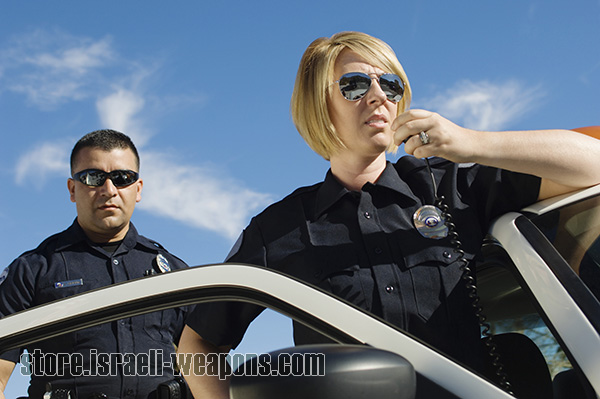
Law enforcement officers and others that keep the peace have got to be protected from harm everyday as they perform their duties. They brave the constant dangers as they guard the neighborhoods and streets throughout our country. Many polices forces require that their personnel wear some form of body armor under most circumstances since it reduces the likelihood that they will experience life threatening injury if they were to come under fire.
Police Officers
Generally, police officers who wear at least a type IIIA (3A) bullet proof vest can feel secure that they will be safe from most low caliber bullets. This grade of vest is advantageous in that it is easily concealed and not ostentatious and is considered to be the least visible on the market today. This bullet proof vests provide ample protection from low velocity calibers like .22, .380, 9mm, .357Mag, and .44Mag, but of course, does not prevent high velocity rifle calibers, which are rarely encounter by officers anyway. Resting comfortably under their uniform, such vests are snug and form fitting to enable the officer to move deftly and perform routine duties. When bullet proof vests do not fit well, are too bulky, or shift easily, this can impede the swift movements that could be need during an arrest or firefight.
SWAT Officers and Special Units
Most municipalities maintain some sort of tactical unit or cadre of officers with advanced training. They may be used in the event of a mass shooting, hold-up, or hostage situation. These types of specially trained forces are more likely to wear more sophisticated bulletproof vests that are rated type III (3)or IV (4) armor plates. These units may need a heavier-duty vest that protects both small arms fire as well as rifle rounds. Due to the higher caliber protection, these vests are thicker and heavier and may restrict officer’s movement more than lighter vests. This is unavoidable since these heavy-duty vest must withstand the more powerful rifle rounds.
Prison Guards and Other Correction Personnel
Corrections system personnel do not usually wear bulletproof vests since they do not have to fear the threat of firearms from the inmates that they guard. However, most corrections officer injuries are suffered due to stabbings from sharpened objects such as shanks and other inmate improvised tools. In order to prevent stabbing injuries, corrections personnel may wear protective bodyarmor that is specially designed to counteract stabbings. This class of bulletproof vest is commonly referred to as (edged blade and spike class), which is comprised of three levels of protective strength. These three levels of strength are rated by the energy force that the anti-stab vest can guard against measured in joules.
So that they can continue to protect and serve the community, law enforcement officers must remain protected from criminals and others who may seek to do them harm. By correctly estimating the appropriate level of bullet proof vest protection needed to meet your needs, officers can mitigate the level of risk from injury through the proper vest choice. Please read out other articles to make sure you select the class of body armor needed for you and your law enforcement situation.
Daniel says
I do not think prison guards need bulletproof vest, they only need stab proof vests, while the police need both.
Mark says
From my service in SWAT we usually did not use armor plates, unless there was a risk of large caliber be present as assault and sniper rifles.